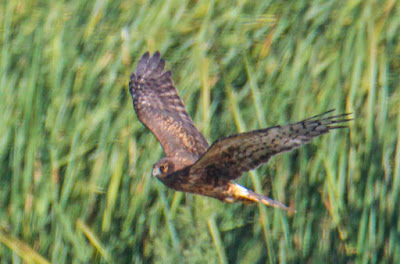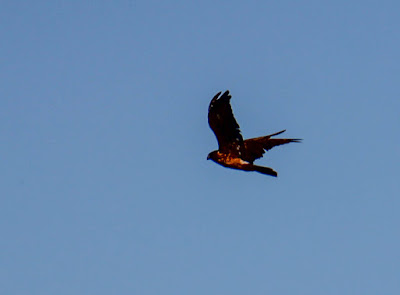I saw my first belted kingfisher in Niland on McDonald Road (near the Salton Sea) in mid-October. It was standing on a telephone wire and I followed it as it flew several times to different parts of the wire.
It has a large slate-blue head with a shaggy crest, heavy black bill with a gray base, a white collar, a blue band on the breast and white underparts. The back and wings are slate blue, with black feather tips and little white dots. Females have a rufous band across the upper belly that extends down the flanks.
The map (from Wikipedia) shows purple as year-round, orange as breeding and blue as non-breeding. The Salton Sea would be blue which makes sense as I've not seen them before in my summer visits. A very distinctive and fun bird to see.










